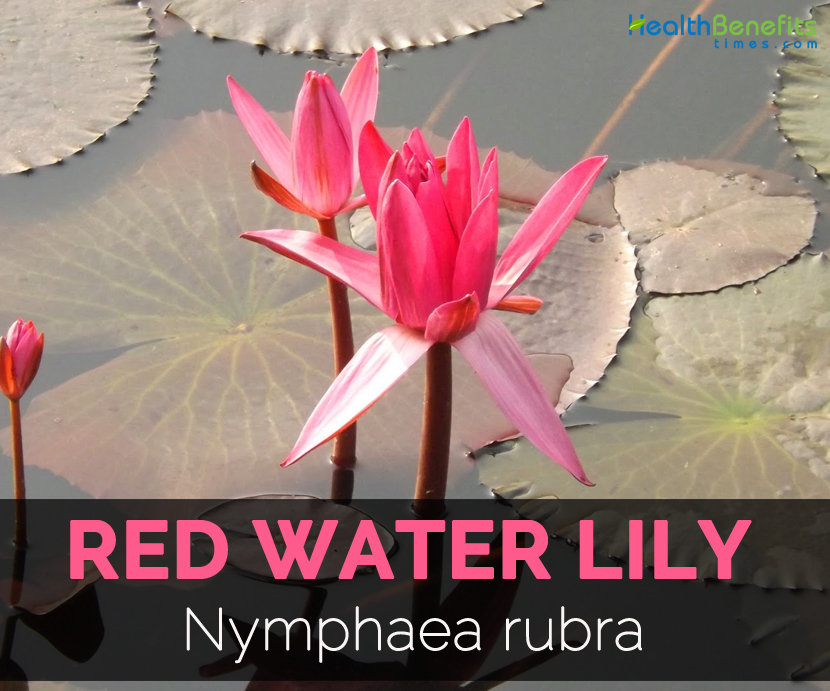| Red Water Lily Quick Facts | |
|---|---|
| Name: | Red Water Lily |
| Scientific Name: | Nymphaea rubra |
| Colors | Brown green |
Plant description
Nymphaea rubra is a perennial herbaceous aquatic plant having pinkish and corm shaped rhizomes rooted in a sediment and forms slender stolons. Leaves are simple, 20 to 50 cm in diameter and subpeltate. Leaves (submerged) are sagittate or cordate with reddish tint. Flowers are showy, bisexual, fragrant, hypogynous, polymerous measuring 15 cm across and solitary on dark red peduncle above water. Calyx is aposepalous having four red oblong to lanceolate and caduceus sepals. Corolla is elliptic to oblanceolate, 20-25 mm and red to purple petals length is thricer longer than the breadth. Androecium is polyandrous and filaments are dark-red purple and petaloid. Ovary is globose encased in a fleshy torus, syncarpous, multi-carpellate and multi-loculed. Fruit is a globose berry which encloses ellipsoid seeds.
- Flower is astringent and cardiac tonic, helpful for heart palpitations.
- Rhizomes are used as a cure for dyspepsia and dysentery.
- People of Assam use the roots for vomiting.
- Apply the dried roots powder in area with piles for 66 to 7 days.
- The mixture of crushed rhizome powder with honey is used for piles, bleeding nose and dysentery in Manipur.
- Apply the leaves paste to body for fever and skin inflammation.
- Use the flowers as a treatment for cholera, diarrhea, hepatopathy, fever and hyperdipisa.
- Root decoction is used for kidney pain, bronchial catarrh or as a gargle for sore throats.
- Use it in douche as a treatment for vaginal soreness and discharges.
- A poultice prepared with the mixture of slippery elm, flax and red water lily is used for treating abscesses and boils.
Culinary uses
Use roasted seeds as a substitute for coffee.
References:
https://www.itis.gov/servlet/SingleRpt/SingleRpt?search_topic=TSN&search_value=18383#null
https://pfaf.org/user/Plant.aspx?LatinName=Nymphaea+candida
https://www.flowersofindia.net/catalog/slides/Red%20Water%20Lily.html
https://www.asklepios-seeds.de/gb/p/nymphaea-rubra-seeds.html
https://www.tuninst.net/MP-KS/Nymphaeaceae/Nymphaeaceae.htm
Comments
comments
